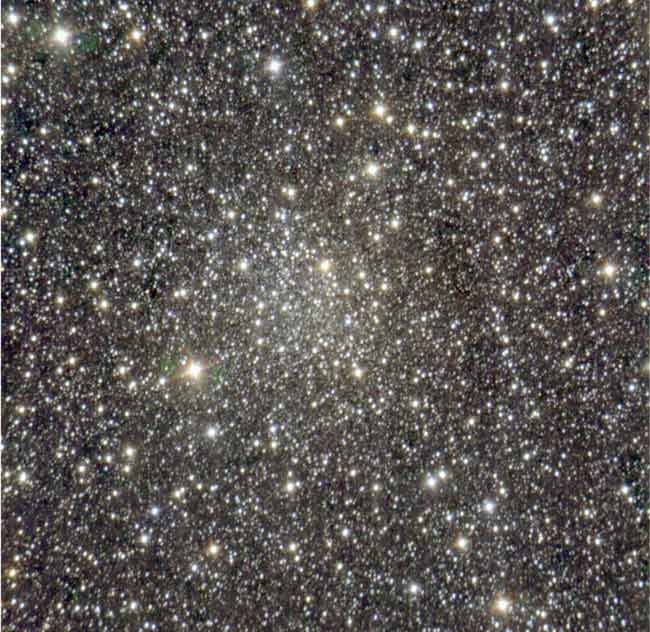New Family of Stars Found in Milky Way

Newtelescope images reveal a previously unknown rich cluster of stars in the inner parts of the Milky Way.
This closely-packedstar family, consisting of about 100,000 stars and located some 30,000 light-yearsaway, was spotted with the European Southern Observatory's New TechnologyTelescope (NTT) at La Silla, Chile.
Thediscovery was part of a large-scale search for globular clusters in theGalactic Plane--a slice of space in which the star-rich disk of our galaxy lies. Globularclusters are gravity-bound groups of stars with spherical symmetry createdat roughly the same time and from the same material. Typically, they areshrouded by dense clouds of gas and dust in the Milky Way, so infraredradiation is the only mechanism to locate such features.
Afterlocating about a dozen clusters with the near-infrared Two Micron All SkySurvey (2MASS), astronomers took new images through three different near-infraredfilters--producing images that are 10 times deeper and much more precise thanthe 2MASS images.
"Ithas been estimated that the region close to the Galactic Center might containabout 10 so-far unknown globular clusters, and we have started a large campaignto unveil and characterize them," said study team member Helmut Meusingerof the Th?ringer Landessternwarte, an observatory in Germany.
Combingthrough the new images, the astronomers found FSR 1735, most likely a newglobular cluster, which previously appeared to be just a cloud of dust and gas.
"Theunique images we have obtained reveal that the nebulous appearance of the cluster inprevious images is, in fact, due to a large number of faint stars," said studyteam member Dirk Froebrich of the University of Kent. "The images show abeautiful, rich and circular accumulation of stars."
Breaking space news, the latest updates on rocket launches, skywatching events and more!
FSR 1735, witha mass estimated to be 65,000 times that of the Sun, is about seven light-years wide. Suchglobular clusters, 150 of which are known in our galaxy, are some of the oldestobjects in it and witnessesto the earliest events of the Universe.
"Webelieve today that galaxycollisions, galaxycannibalism, as well as galaxymergers, leave their imprint in the globular cluster population of anygiven galaxy," Froebrich said. "Thus, when investigating globular clusters, wehope to be able to use them as an acid test for our understanding of the formationand evolution of galaxies."
- Top 10 Star Mysteries
- Stars, Galaxies, and Universe Wallpaper
- Star Clusters Hold Secrets to Stellar Evolution
- Video: Searching for SuperStars
- All About Stars

